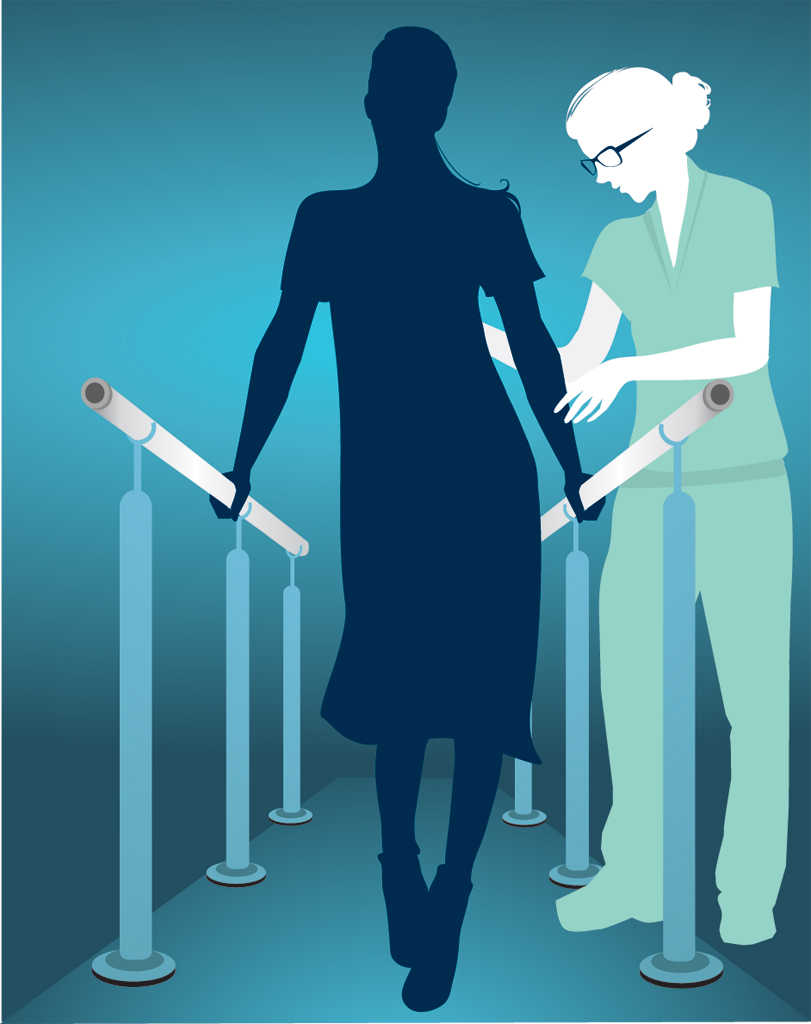By Linda A. Lucuski, PT, DPT
Did you know that according to the National Institute on Aging, more than 1 in 3 people age 65 years or older falls each year?
Moreover, thousands of older adults sustain significant injuries, including fractures, after a fall.
Physical therapy, however, can help older adults recover from falls and it can also help prevent falls before they happen.
Princeton Rehabilitation, a unit of Penn Medicine Princeton Medical Center (PMC), offers comprehensive physical therapy services to help improve strength and balance and address issues of dizziness and vertigo so that patients can stay on their feet as they age.
Leading Cause of Injury-Related Death
Falls are the leading cause of injury-related deaths among adults age 65 and older in the United States, according to the Centers for Disease Control and Prevention (CDC).
More specifically, falls that result in a hip fracture are especially dangerous as studies indicate that hip fractures are associated with increased mortality rates for older adults.
This is in part because older adults are more likely to have other health complications, making them slower to recover from injuries than others.
As the CDC notes, more than 300,000 adults age 65 and older are hospitalized for a hip fracture each year in the United States, and the chances of breaking a hip increase as you get older.
Common Risk Factors
There are many reasons someone may experience a fall, and typically, the more risk factors someone has, the greater their chances of falling.
Some of the most common risk factors for falling include:
• Dizziness and vertigo, which may be caused by medication or another health conditions.
• Lower body weakness.
• Difficulty walking and balancing.
• Vision problems.
• Poor footwear.
• Home hazards, such as area rugs, poor lighting, wet floors, and small pets that are underfoot.
According to the CDC, women are especially at risk. The CDC reports that women fall more often than men, and are more prone to osteoporosis, a disease that weakens bones and makes them more susceptible to fracture.
Further, falling once doubles your chances of falling again.
If you are concerned about your risk for falling or have already experienced a fall, talk to your doctor. He or she may prescribe physical therapy to help reduce your risk.
Prevention Tips
The best way to prevent fractures is to prevent falls. Here are some steps you can take to reduce your risk of falling:
• Start with sensible shoes. High heels, sloppy slippers, and shoes with slick soles can make you slip, stumble, and fall. So can walking in socks or stockings. Choose proper fitting, sturdy shoes with nonskid soles. Trade slip-ons for lace-up shoes or shoes with Velcro straps.
• Light up your life. Keep your home brightly lit to avoid tripping over objects that are hard to see. Use night lights in bedrooms, bathrooms and hallways. Have a lamp within reach of your bed. Turn on the lights when going up and down stairs.
• Address home hazards. Secure loose rugs with slip-resistant backing, or better yet remove loose rugs altogether. Declutter. Store clothing, food and dishes within reach. Put up railings on indoor and outdoor stairs, and install non-slip treads on bare wood steps.
• Be safe in the bath. Bathrooms are common places for falls. Install grab bars around the tub and toilet. Consider a tub chair or bench and handheld shower. Use non-skid mats.
• See to it. Check your eyeglass prescription regularly and clean your glasses on a daily basis.
• Keep moving. Exercise helps to strengthen your muscles, improve joint mobility and improve balance. Strength exercises can be performed standing or while seated in a supportive chair or even on the bed. Slow exercises like tai chi and seated yoga are great for getting you moving and for improving your balance.
• Review your medications. Periodically review your prescriptions with your physician, pharmacist, or healthcare practitioner to ensure they’re not causing side effects like dizziness or vertigo.
Physical Therapy Can Help
Physical therapists can help people reduce their risk of falling by developing an individualized exercise program that builds strength and improves balance. They can also teach you how to use assistive devices, such as canes and walkers, to help you get around safely. In addition, therapists can perform a home safety inspection to identify and address fall hazards.
Physical therapy is also important when recovering after a fall. In many cases, people fear falling again and limit their activity. Working with a therapist to regain strength and mobility can also help you regain your confidence and quality of life.
Princeton Rehabilitation is currently treating patients in person and via telehealth. Every precaution is being taken to ensure the safety of patients and staff. All staff and patients are screened prior to entering the building, face masks are required, patients are seen one-on-one, physical distancing is maintained in waiting areas, and all equipment is sanitized and disinfected between each patient.
For more information about Princeton Rehabilitation or to find a physical therapist with Princeton Rehabilitation, call 609-853-7840 or visit www.princetonhcs.org.
Linda A. Lucuski, PT, DPT, is a licensed physical therapist and director of Princeton Rehabilitation in Hamilton.

